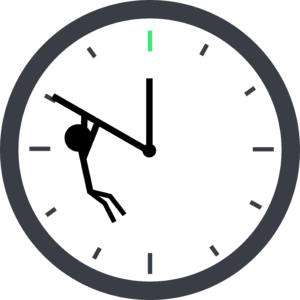
Flexibility and Mobility | Enhancing Longevity Through Movement
As we age, maintaining flexibility and mobility becomes essential for preserving independence, preventing injuries, and improving overall quality of life. Flexibility keeps your joints and muscles functioning properly, while mobility ensures you can move freely and comfortably through your daily activities. Together, they form a critical foundation for healthy ageing and longevity.
In this guide, we’ll explore the importance of flexibility and mobility, their unique benefits, and how to integrate them into your routine.
The Importance of Flexibility and Mobility
Flexibility refers to the ability of your muscles and joints to move through their full range of motion, while mobility encompasses the overall ease and control of movement. As we age, natural changes like muscle stiffness, joint wear, and decreased physical activity can limit both, leading to:
- Reduced Independence: Difficulty performing everyday tasks like bending, reaching, or walking.
- Higher Risk of Injury: Stiff muscles and limited joint mobility increase the likelihood of falls and strains.
- Chronic Pain: Tight muscles and restricted joints can lead to discomfort and long-term pain.
By prioritising flexibility and mobility exercises, you can mitigate these challenges, promoting vitality and resilience.
Benefits of Flexibility and Mobility for Longevity
- Prevents Injuries
-
- Stretching and mobility exercises reduce muscle tension and improve joint stability, lowering the risk of strains and sprains.
- Enhances Posture and Alignment
-
- Regular stretching corrects muscle imbalances, alleviating back, neck, and shoulder pain caused by poor posture.
- Supports Joint Health
-
- Mobility exercises keep joints lubricated and functioning properly, delaying the onset of stiffness and conditions like arthritis.
- Improves Balance and Coordination
-
- Enhanced mobility allows for smoother, more stable movements, reducing the risk of falls.
- Promotes Relaxation and Stress Relief
-
- Stretching releases tension, improves circulation, and encourages relaxation, supporting mental and physical wellbeing.
- Boosts Physical Performance
-
- Increased flexibility and mobility enhance performance in strength training, aerobic exercise, and other physical activities, allowing you to move more efficiently.
Getting Started with Flexibility and Mobility Exercises
Integrating flexibility and mobility exercises into your routine doesn’t require much time or equipment. Here’s how to get started:
- Focus on Key Areas
-
- Prioritise stretching and mobility for commonly tight areas, such as the hips, hamstrings, shoulders, and lower back.
- Incorporate Dynamic Stretches
-
- Perform gentle, controlled movements to warm up your body before exercise. Examples include leg swings, arm circles, or spinal twists.
- Practice Static Stretching
-
- Hold each stretch for 20–30 seconds to improve flexibility. Include stretches like seated forward folds, chest openers, and calf stretches.
- Try Yoga or Pilates
-
- These practices combine flexibility and mobility training with strength and balance, offering a comprehensive approach to healthy movement.
- Use Mobility Tools
-
- Foam rollers and massage balls can release muscle tightness and improve range of motion.
- Stay Consistent
-
- Dedicate 10–15 minutes daily to stretching and mobility work, or integrate it into your warm-up and cool-down routines.
Sample Flexibility and Mobility Routine
Here’s an example of a short routine to enhance flexibility and mobility:
- Cat-Cow Stretch (Spinal Mobility)
- Perform 8–10 gentle transitions between arching and rounding your back.
- Hip Flexor Stretch (Hip Flexibility)
- Hold for 20 seconds on each side, ensuring your hips stay aligned.
- Hamstring Stretch (Lower Body Flexibility)
- Sit on the floor and reach toward your toes, holding for 20 seconds.
- Thoracic Rotation (Upper Body Mobility)
- Lie on your side with knees bent, then twist your upper body to open your chest. Repeat 5–8 times on each side.
- Ankle Circles (Joint Mobility)
- Perform 10 circles in each direction for both ankles.
Debunking Myths About Flexibility and Mobility
Let’s address some common misconceptions:
- Myth: Flexibility Training Isn’t Necessary for Older Adults
Flexibility is crucial for maintaining mobility and preventing injuries, particularly as we age. - Myth: Stretching Only Benefits Athletes
Everyone can benefit from improved flexibility, whether you’re an athlete or simply looking to stay active and independent. - Myth: It’s Too Late to Improve Mobility
With consistent practice, you can regain flexibility and mobility at any age.
Your Path to Movement and Longevity Starts Here
Flexibility and mobility are essential components of healthy ageing, allowing you to move freely, perform daily tasks, and stay active well into your later years. By dedicating time to stretching and mobility exercises, you can enhance your quality of life, reduce the risk of injuries, and maintain your independence.
At Slowing the Clock, we’re committed to providing evidence-based guidance to help you optimise your health and longevity. Explore our website for more tips on fitness, recovery, and personalised movement plans.